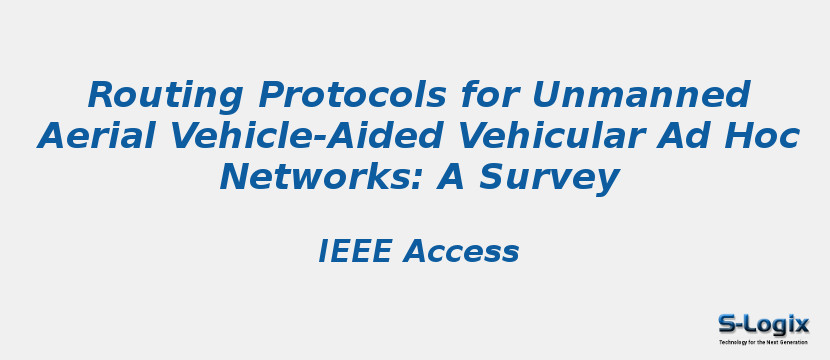Research Area: Vehicular Ad Hoc Networks
In intelligent transportation systems, a vehicular ad hoc network (VANET) has a significant impact in enhancing road safety, traffic management efficiency, and in-vehicle infotainment features. Routing in a VANET is hampered by frequent link disconnection for non-line-of-sight communication due to roadside obstacles, high mobility, and frequent topological changes. With the help of three-dimensional movement capability, an unmanned aerial vehicle (UAV) can drastically improve the routing experience of a VANET, by increasing the line-of-sight probability, better connectivity, and efficient store-carry-forward mechanism. As a result, various routing protocols with different objectives have been reported for UAV-aided VANETs. Several surveys have been conducted based on different routing protocols for VANETs so far. However, to the best of the authors knowledge, no survey exists till now that dedicatedly covers routing protocols for UAV-aided VANETs. This survey paper presents a comprehensive review on state-of-the-art routing protocols for UAV-aided VANETs. The protocols are categorized into seven groups in terms of their working mechanism and design principles. The shortcomings of the protocols are identified individually by critically analyzing them with regard to their advantages, disadvantages, application areas, and future improvements. The routing protocols are qualitatively compared with each other in tabular format as well on the basis of various design aspects and system parameters. In particular, not only performance and special features but also optimization criteria and techniques are extensively discussed in addition to the tabular comparison. Furthermore, open research issues and challenges are summarized and discussed.
Keywords:
Author(s) Name: Rezoan Ahmed Nazib; Sangman Moh Chosun University, Gwangju, South Korea
Journal name: IEEE Access
Conferrence name:
Publisher name: IEEE
DOI: 10.1109/ACCESS.2020.2989790
Volume Information: ( Volume: 8) Page(s): 77535 - 77560
